Ingredients
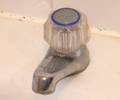 | A little water | 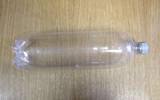 | Some transparent plastic from a lemonade bottle or some packaging |
Instructions
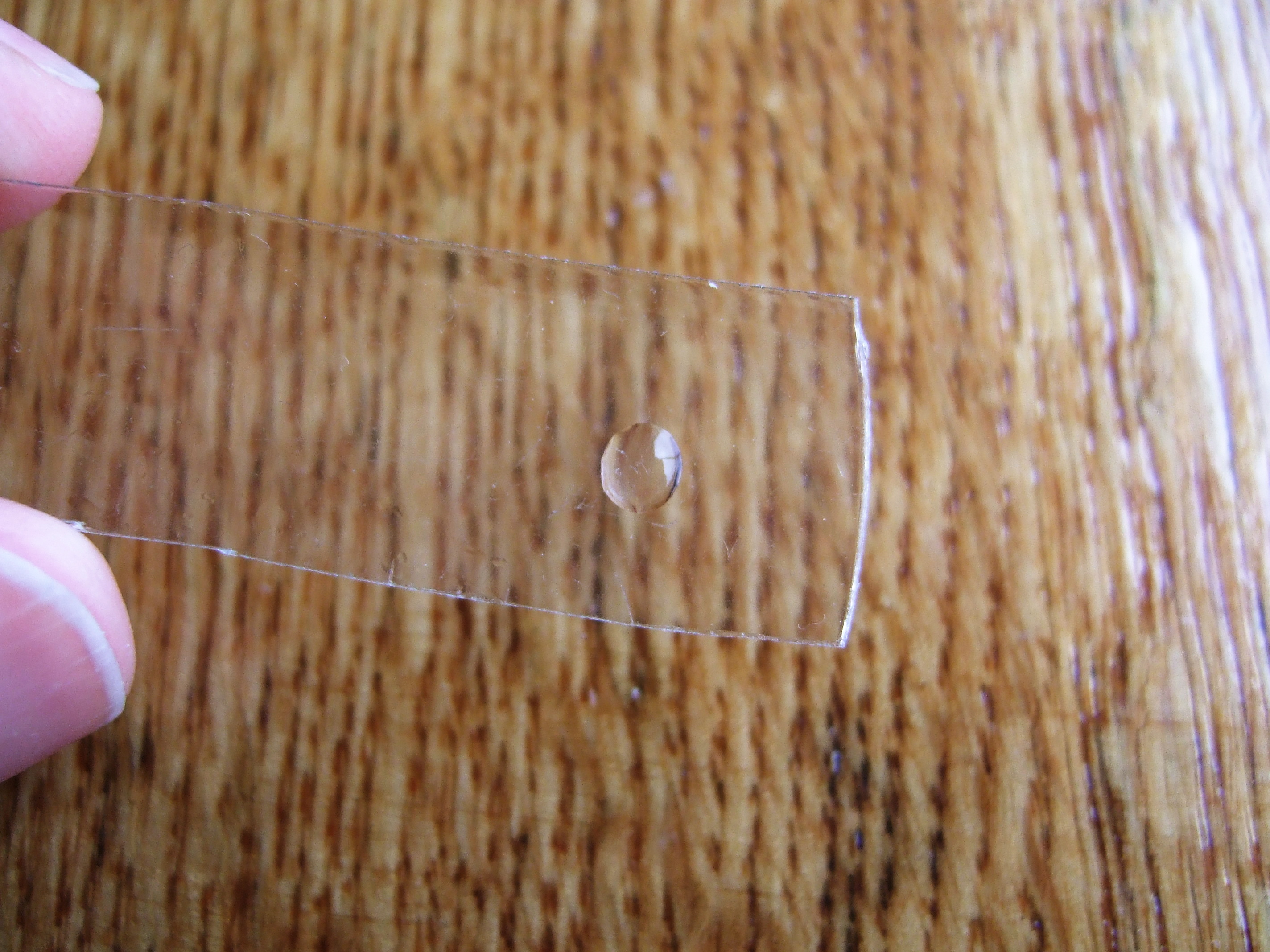 Cut a small piece of transparent, thin (but still stiff) plastic like you find at the sides of a lemonade bottle. Make it about 2cm wide and 4-5cm long.
Cut a small piece of transparent, thin (but still stiff) plastic like you find at the sides of a lemonade bottle. Make it about 2cm wide and 4-5cm long.
Using your finger or something like a pencil, dab a small droplet of water onto the plastic. For best effect, you want a nice circular droplet about 5-6mm across.
Try looking at things through it. You may have to get quite close to get good results.

Result
You should find that the droplet magnifies what you are looking by a factor of 5-10. The smaller the droplet the more the magnification, but also the harder it is to look through.
Explanation
The droplet is acting as a very powerful magnifying glass. The water droplet acts as a lens, this bends the light so that it approaches you eye as if it was coming from a much larger object, so it looks magnified.
Microscopes on this principle were state of the art in the 17th century. They were perfected by Antonie van Leeuwenhoek, using tiny glass lenses a similar shape to your water droplet. Because he could make a small almost spherical lens much more accurately than a larger one he could make a much better small microscope than a large one. The problem was that they were very difficult to use, so although he could make a microscope that would magnify up to 200x very few other people could use it. This meant that he wasn't believed for a long time when he saw bacteria, which was unfortunate for medicine over the next 200 years until Pasteur came up with the germ theory of disease.
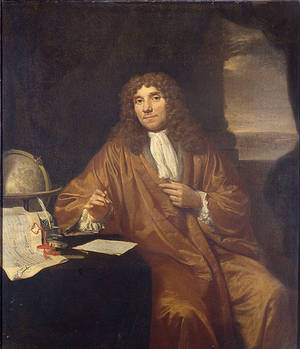 | 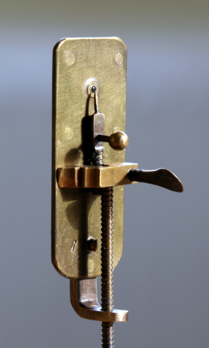 |
| Antonie van Leeuwenhoek | Leeuwenhoek's microscope, a tiny glass lens with a point to hold the object to be viewed. |
Why does it magnify anyway?
First of all the way that you see the size of something is to do with how large an angle it makes on your eye. The larger the angle the larger the object looks.
 | 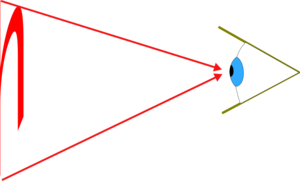 |
| A small object makes a small angle with your eye. | A large object a larger one. |
Light travels more slowly in water than in air, so when the light moves from one to the other it will bend or refract. The light will bend more near the edges of the lens than at the centre because it is more curved there
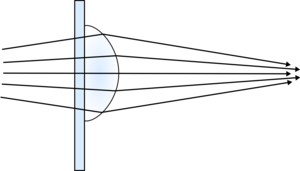 |
| A drop is shaped so that light hitting the edges is bend more than the centre © Dave Ansell |
This means that if you look at an object on the centre, the light relfected from the object will go through a less curved piece of water than the light going through the sides. This means that the light looks like it is coming from a larger object, and appears magnified.
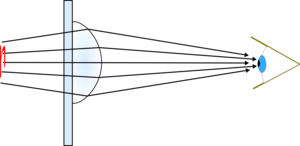 | 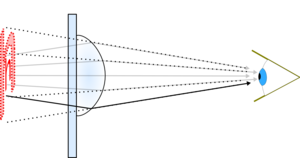 |
| The light reflected off the object is refracted by the water droplet. | Your eye sees this as if it were a larger object, and it appears magnified. |
The Science of Sneezing on a Screen
When you spray polish on a TV screen, use a mobile phone in the rain or sneeze on your monitor (which is not very hygienic, by the way), you may see strange colours, or a grid seem to appear in the droplets on the screen. This happens because you are putting many tiny blobs of water onto the screen, and each of these blobs acts like a lens to magnify the pixels underneath. Screens are made up of a grid of tiny pixels, and so you may see the individual pixels magnified in exactly the same way that the droplet of water on clear plastic does above.
- Previous Science of fruit jellies
- Next Vortex Cannon










Comments
Would the magnification size
Would the magnification size differ in hot and cold water?
Intuitively, yes it would,
Intuitively, yes it would, because the temperature will affect the density of the water and hence the refractive index. That said, the effect would be very small.
it was cool that i was
it was cool that i was reading Why does it magnify anyway?
this sounds fun!!!
this sounds fun!!!
wow what an amazing inventory
wow what an amazing inventory
Add a comment